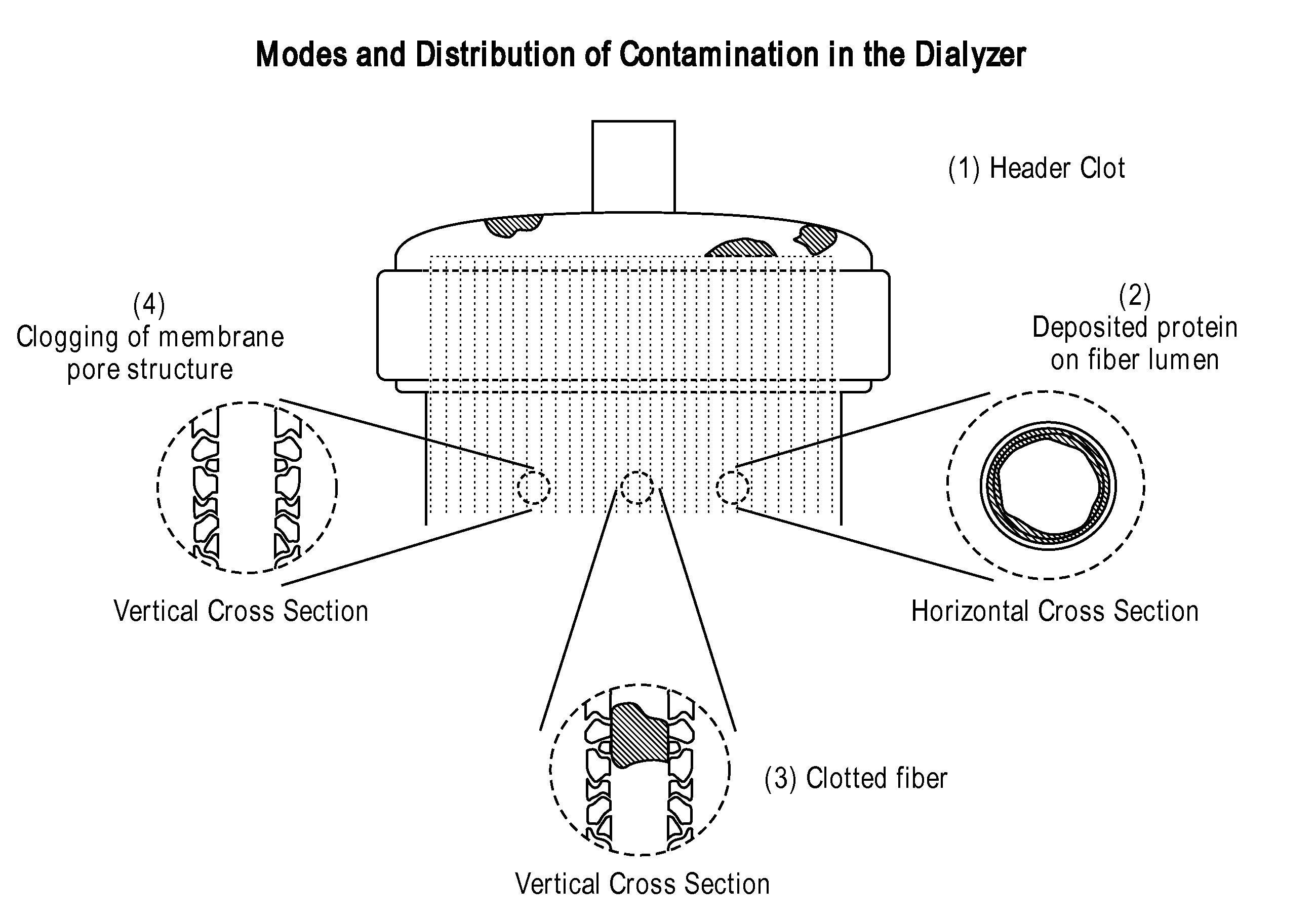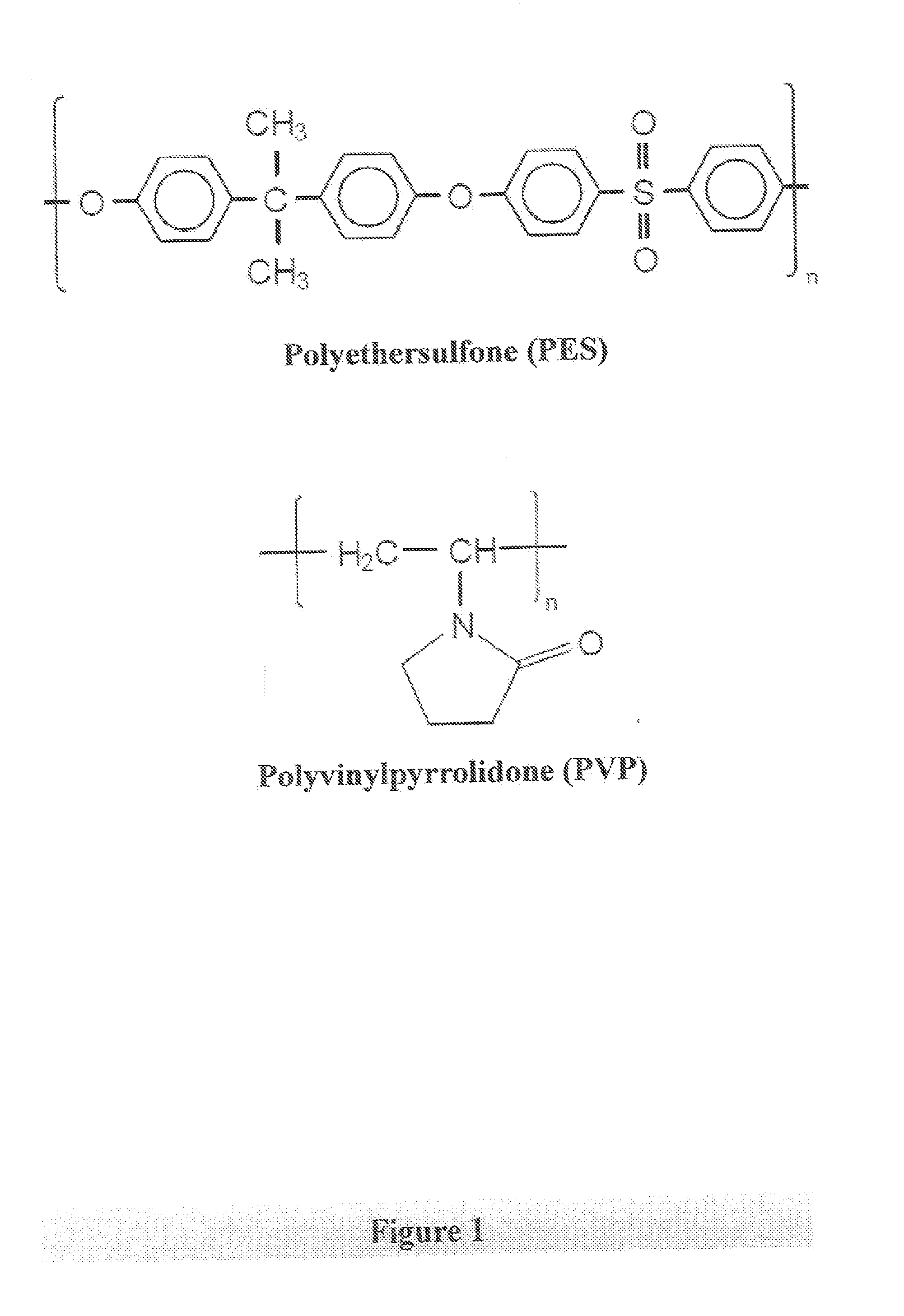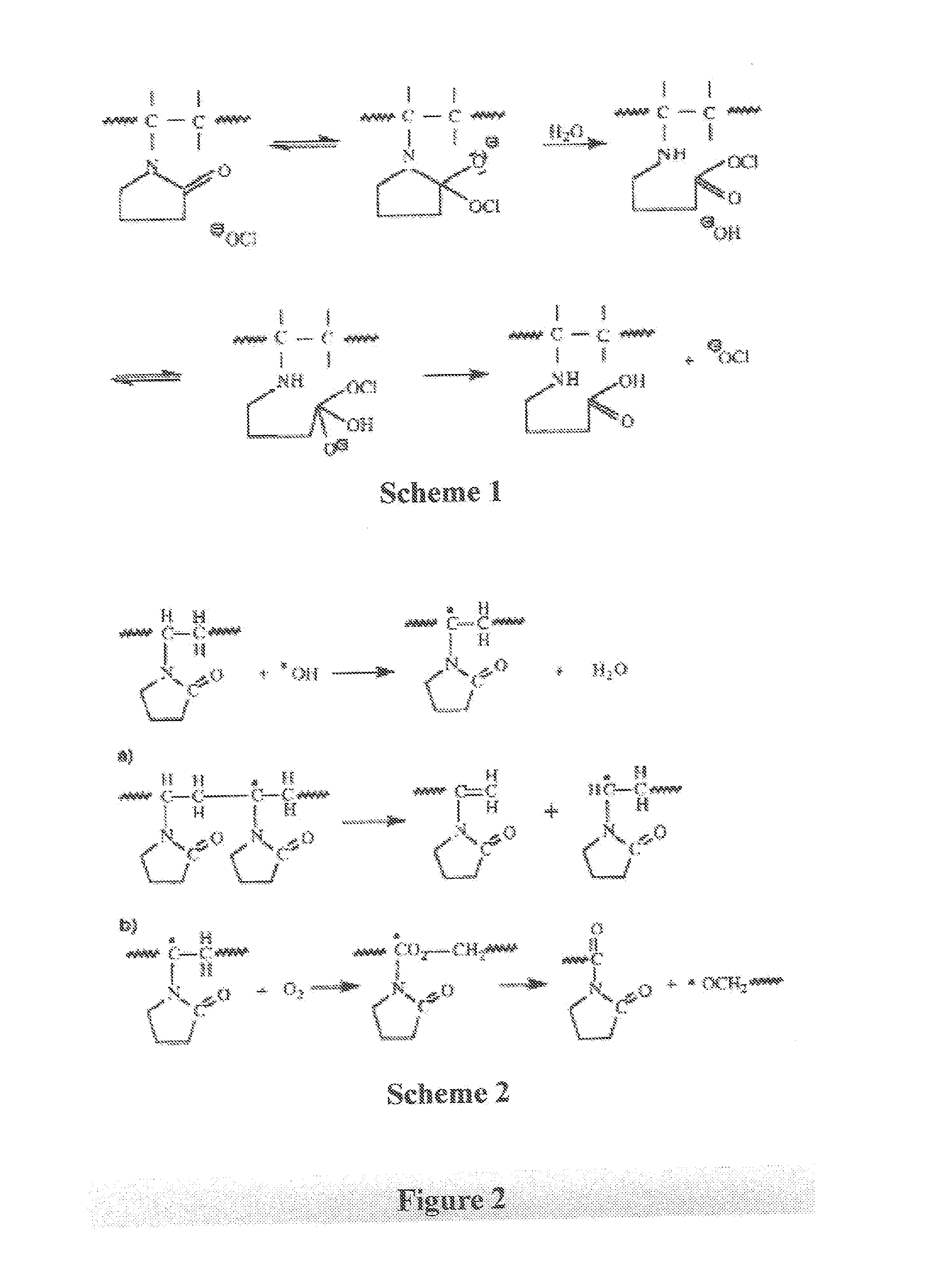Compositions and methods of cleaning polyvinyl pyrrolidone-based hemodialysis filtration membrane assemblies
a technology of membrane assemblies and polyvinyl pyrrolidone, which is applied in the direction of detergent compounding agents, compositions of inorganic non-surface active detergents, disinfection, etc., can solve the problems of low cleaning rate and inability to clean dialyzers, and achieves the effect of minimizing damage to membranes, avoiding loss of performance, and effective removal of membrane fouling proteins
- Summary
- Abstract
- Description
- Claims
- Application Information
AI Technical Summary
Benefits of technology
Problems solved by technology
Method used
Image
Examples
example 1
Loss of Convective Clearance of Dialysis Membranes Processed with Peracetic Acid and Relationship Between Cross-Flow Permeability and Middle Molecules Clearance
[0186]This example demonstrates that peracetic acid processing causes a significant decrease in the convective clearance of the dialyzers (clearance of middle molecules), and establishes the relationship between the loss of convective clearance and cross-flow ultrafiltration rate (Lp). Patient dialyzers were selected at random after one or more reuses / processing with the peracetic acid method. The cross-flow permeability (Lp) and clearance of middle molecules (dextran probes) of the same dialyzers were measured according to Methods A and B, respectively.
[0187]Table 4 shows a significant decrease in the convective clearance of dialyzers used by patients and reprocessed by the peracetic acid method as a function of the reuse number. This data indicates that deposited and adsorbed proteins in the membrane pore structure of the d...
example 2
Cleaning Dialysis Membrane Assemblies with High-Caustic / High Alkalinity Only
[0189]Polyflux® Gambro dialyzers used to perform dialysis treatment were cleaned with a high pH sodium hydroxide solution (pH 12.3) at 45°-50° C. according to the gas-liquid method described in the embodiment. The cross-flow permeability (Lp) and the dextran clearance of the dialyzers were measured according to Methods A and B, respectively. Table 5 shows that cleaning the dialysis membrane assemblies with high pH caustic solution even at 45°-50° C. does not fully recover the cross-flow permeability or the middle molecules clearance as assessed by dextran probes (Table 6). This treatment was only capable of restoring 70% of the cross-flow permeability compared to new dialyzer levels. The clearance of 5 kD dextran was close to new dialyzer levels; however, there was a significant decrease in the clearance of large dextrans as shown in Table 6. When dialyzers used by the same group of patients multiple times a...
example 3
Effect of Hypochlorite Salt Concentration on the Recovery of Middle Molecules Clearance of Dialysis Membranes
[0190]In this example, two cleaning mixtures were made at the same pH (12.3) to demonstrate the effect of the concentration of the hypochlorite salt used in the inventive composition on the clearance of middle molecules of a dialysis membrane type made by one manufacturer. Composition A had 625 ppm NaOCl and Composition B has 1000 ppm NaOCl. The pH was adjusted with NaOH as described in the specification. The dialyzers were used to treat the same group of patients with each treatment lasting 4 hours. The dialyzers were cleaned at 45°-50° C. using the gas liquid treatment method according to the embodiment. Table 7 summarizes the results for Compositions A and B, respectively.
[0191]The results demonstrate that the Composition A (1000 ppm NaOCl) provides effective recovery of dextran probes clearance but causes an increase the clearance levels of dextran probes above those of n...
PUM
| Property | Measurement | Unit |
|---|---|---|
| temperature | aaaaa | aaaaa |
| mole % | aaaaa | aaaaa |
| pH | aaaaa | aaaaa |
Abstract
Description
Claims
Application Information
 Login to View More
Login to View More - R&D
- Intellectual Property
- Life Sciences
- Materials
- Tech Scout
- Unparalleled Data Quality
- Higher Quality Content
- 60% Fewer Hallucinations
Browse by: Latest US Patents, China's latest patents, Technical Efficacy Thesaurus, Application Domain, Technology Topic, Popular Technical Reports.
© 2025 PatSnap. All rights reserved.Legal|Privacy policy|Modern Slavery Act Transparency Statement|Sitemap|About US| Contact US: help@patsnap.com



